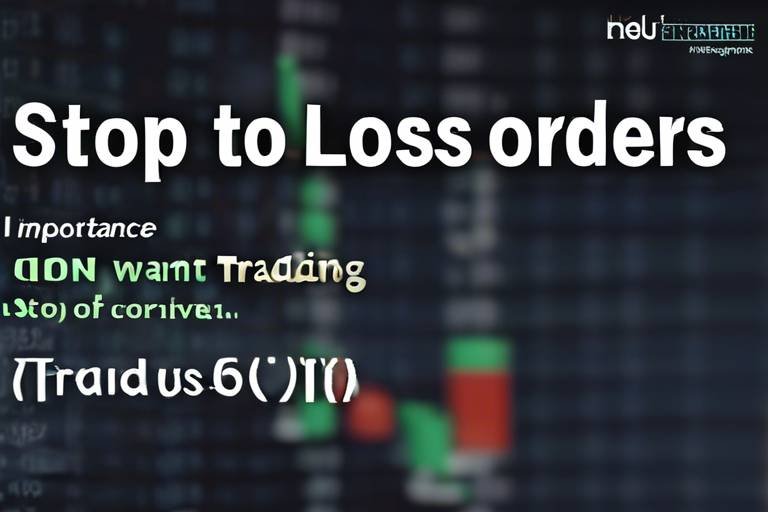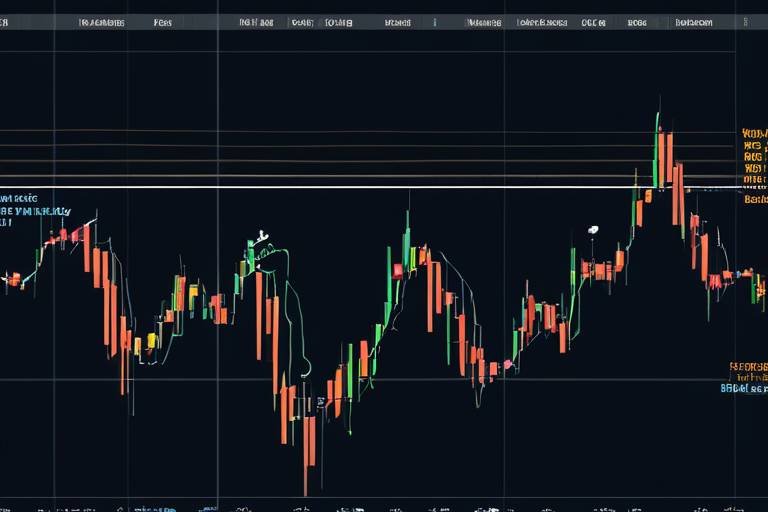Using Options for Hedging Risks in Crypto
In the ever-evolving world of cryptocurrency, where price swings can be as dramatic as a roller coaster ride, investors are constantly on the lookout for ways to safeguard their assets. One powerful tool in this arsenal is the use of options. But what exactly are options, and how can they help you hedge against the risks associated with crypto investments? This article dives deep into the mechanics of options, their benefits, and practical applications, empowering you to make informed decisions in the volatile crypto market.
Options are financial derivatives that provide investors with the right—though not the obligation—to buy or sell an asset at a predetermined price within a specified timeframe. Think of options as a safety net; they allow you to protect your investments while retaining the potential for profit. In the crypto market, where volatility reigns supreme, options have become increasingly relevant. They enable investors to navigate the choppy waters of price fluctuations without having to sell their holdings outright.
Hedging is like wearing a raincoat on a cloudy day. It’s a risk management strategy designed to offset potential losses in your investments, particularly crucial in the unpredictable realm of cryptocurrencies. With prices that can skyrocket one day and plummet the next, hedging becomes a lifeline for investors. By employing hedging strategies, you can protect your portfolio from adverse market movements and sleep a little easier at night, knowing you have a plan in place.
When it comes to hedging, there are various strategies to choose from, each with its own unique approach. Here’s a quick overview:
- Direct Hedging: This involves taking an opposing position in the same asset, allowing you to counterbalance potential losses.
- Indirect Hedging: This strategy utilizes different assets or instruments to offset risks, providing a diversified approach to risk management.
Direct hedging is akin to having a backup generator during a storm. By taking an opposing position in the same cryptocurrency, you can shield yourself from unfavorable price movements. For example, if you own Bitcoin and fear a short-term decline, you could purchase a put option, granting you the right to sell your Bitcoin at a predetermined price. This way, if the market does take a downturn, your losses are mitigated, and you can breathe a little easier.
On the other hand, indirect hedging is like diversifying your investments to spread risk. This strategy involves using different financial products or assets to offset potential losses in your crypto portfolio. For instance, if you’re heavily invested in Ethereum, you might consider investing in a stablecoin or even traditional assets like stocks or bonds. By doing so, you create a buffer against the volatility that often accompanies cryptocurrencies.
So, why should you consider using options for hedging? The benefits are numerous and compelling. First off, options provide a level of flexibility that other financial instruments simply can’t match. You can tailor your options strategy to fit your unique risk tolerance and investment goals. Additionally, options come with limited risk exposure; your maximum loss is confined to the premium you paid for the option, making them a safer alternative compared to outright selling your assets.
Implementing options for hedging might seem daunting at first, but with a strategic approach, it can be straightforward. Start by identifying your risk exposure and determining how much protection you need. Next, you’ll want to select the right options that align with your investment strategy. This involves considering factors such as strike prices and expiration dates, ensuring that your options fit your financial goals.
Choosing the appropriate options is crucial for successful hedging. Here are some factors to consider:
- Strike Price: The price at which you can buy or sell the underlying asset. It should reflect your expectations of market movements.
- Expiration Date: The timeframe in which the option can be exercised. Consider how long you need protection based on market conditions.
Even seasoned investors can stumble when using options for hedging. Some common pitfalls include:
- Over-hedging, which can lead to unnecessary costs.
- Ignoring market conditions, which can result in poor timing.
- Failing to understand the mechanics of options, leading to miscalculations.
By being aware of these mistakes, you can navigate the complexities of options trading more effectively and enhance your risk management strategies.
- What are options in cryptocurrency? Options are contracts that give you the right to buy or sell a cryptocurrency at a predetermined price before a specific date.
- How do options help in hedging? They allow you to protect your investments from adverse price movements without having to sell your assets outright.
- What is the difference between direct and indirect hedging? Direct hedging involves taking an opposing position in the same asset, while indirect hedging uses different assets to offset risks.

Understanding Options in Cryptocurrency
When diving into the world of cryptocurrency, one might stumble upon the term options. But what exactly are these financial instruments, and how do they fit into the crypto landscape? At its core, an option is a financial derivative that grants the holder the right, but not the obligation, to buy or sell an underlying asset at a predetermined price, known as the strike price, within a specified timeframe. This unique characteristic allows investors to navigate the often tumultuous waters of the crypto market with a bit more confidence.
To put it simply, options can be likened to an insurance policy for your investments. Just as you wouldn’t drive a car without insurance, diving into crypto without understanding options can leave you vulnerable to unexpected price swings. In the crypto market, where volatility reigns supreme, options serve as a protective shield, allowing you to hedge against potential losses while still retaining the opportunity for gains.
There are two main types of options: call options and put options. A call option gives the holder the right to buy an asset at the strike price before the option expires, while a put option allows the holder to sell the asset at the strike price. This duality offers investors flexibility in managing their portfolios. For instance, if you believe that the price of Bitcoin will rise, purchasing a call option allows you to lock in a lower price. Conversely, if you anticipate a decline in value, a put option can help you mitigate losses.
In the context of cryptocurrency, options trading has grown significantly, with platforms like Binance and Deribit offering various options for traders. The appeal lies in the ability to leverage these instruments to manage risk effectively. However, it's crucial to understand the mechanics behind options trading, as factors such as expiration dates and implied volatility can greatly influence the outcome of your trades.
To further illustrate the mechanics, let’s consider a simple example. Imagine you own 1 Bitcoin currently valued at $50,000. You fear that the price may drop in the coming weeks due to market uncertainty. By purchasing a put option with a strike price of $48,000, you secure the right to sell your Bitcoin at that price, even if the market dips below it. This way, your potential loss is capped, providing a safety net while still allowing you to benefit if the market moves in your favor.
Overall, understanding options in cryptocurrency is not just about knowing how they work; it’s about recognizing their potential to enhance your trading strategy. With the right knowledge and approach, options can transform your investment experience, making it not just safer but also more rewarding.

The Importance of Hedging
When it comes to investing in cryptocurrencies, one thing is for sure: the market can be as unpredictable as a roller coaster ride. Just when you think you’ve got a handle on things, the price of Bitcoin might plummet, leaving you feeling like you've just hit a sudden drop. This is where hedging becomes essential. Hedging is a risk management strategy that helps investors protect their portfolios from adverse price movements. Think of it as an insurance policy for your investments. By using hedging techniques, you can offset potential losses and ensure that your financial future remains secure.
Why is hedging so crucial for crypto investors? The answer lies in the inherent volatility of the market. Cryptocurrencies are notorious for their price swings, which can be influenced by various factors, including regulatory news, technological advancements, and even social media trends. For instance, a single tweet from a prominent figure can send prices soaring or crashing in a matter of minutes. Therefore, having a solid hedging strategy in place can be the difference between a minor setback and a financial disaster.
Moreover, hedging is not just about protecting your investments; it’s also about enhancing your overall trading strategy. By incorporating hedging into your investment plan, you can achieve a more balanced risk-return profile. This means that while you may not hit the highest peaks of profit, you can also avoid the deepest valleys of loss. It's a way to sleep better at night, knowing that your investments are somewhat shielded from the unpredictable nature of the market.
Here are a few key reasons why hedging is vital for crypto investors:
- Volatility Management: Hedging allows you to manage the volatility that comes with cryptocurrency investments, enabling you to navigate the ups and downs with greater confidence.
- Capital Preservation: By offsetting potential losses, you can preserve your capital, ensuring that you have funds available for future investment opportunities.
- Peace of Mind: Knowing that you have a strategy in place to mitigate risks can reduce anxiety and help you make more rational investment decisions.
In conclusion, the importance of hedging in the world of cryptocurrency cannot be overstated. It serves as a vital tool for managing risk, preserving capital, and providing peace of mind in an unpredictable market. As you delve deeper into the world of crypto investments, remember that a well-thought-out hedging strategy can be your safety net, allowing you to embrace the thrills of trading while minimizing the potential for devastating losses.
1. What is hedging in cryptocurrency?
Hedging in cryptocurrency refers to strategies used to offset potential losses in investments by taking opposing positions or using financial instruments like options.
2. Why is hedging necessary for crypto investors?
Hedging is necessary for crypto investors because of the market's volatility. It helps protect against sudden price fluctuations and preserves capital.
3. Can I hedge my cryptocurrency investments without using options?
Yes, you can hedge your investments using various methods, including direct and indirect hedging strategies, but options provide unique advantages in terms of flexibility and risk exposure.

Types of Hedging Strategies
When it comes to managing risk in the volatile world of cryptocurrency, understanding the different types of hedging strategies is essential for investors looking to safeguard their assets. Hedging is not a one-size-fits-all approach; rather, it encompasses a variety of methods that cater to different risk appetites and market conditions. In this section, we will delve into the primary types of hedging strategies employed by crypto investors, highlighting their unique characteristics and how they can be effectively utilized.
One of the most straightforward methods is direct hedging. This strategy involves taking an opposing position in the same asset, which means if you own a cryptocurrency, you would also buy a derivative or options contract that profits when the price of that cryptocurrency falls. For example, if you hold Bitcoin and fear a price drop, purchasing a put option gives you the right to sell your Bitcoin at a predetermined price. This creates a safety net, allowing you to minimize losses if the market turns against you.
On the flip side, we have indirect hedging, which employs different assets or financial instruments to offset risks. This can be particularly useful when direct hedging may not be feasible or when an investor wants to diversify their hedging strategy. For instance, an investor might consider using futures contracts on a correlated asset like Ethereum to hedge against Bitcoin price fluctuations. The idea here is that if Bitcoin's price drops, Ethereum might also decline, but the losses can be balanced out through the futures position.
Another fascinating approach is cross-hedging, which is a type of indirect hedging. Here, investors utilize assets that are not directly correlated to their primary investment but still have some relationship. For example, if you hold a significant amount of a lesser-known altcoin, you might hedge using Bitcoin or Ethereum futures. This strategy relies on the assumption that movements in the larger market can provide a buffer against losses in the altcoin market.
Ultimately, the choice of hedging strategy should align with your investment goals and risk tolerance. Each method has its own set of advantages and disadvantages, and understanding these can help you make informed decisions. Whether you prefer the simplicity of direct hedging or the complexity of cross-hedging, the key is to remain vigilant and adaptable in the ever-changing crypto landscape.
As a final note, it’s essential to continuously monitor your hedging strategies and adjust them as market conditions evolve. The crypto market is known for its rapid changes, and what worked yesterday may not be effective tomorrow. By staying informed and flexible, you can better protect your investments against unforeseen market movements.
- What is hedging in cryptocurrency? Hedging in cryptocurrency refers to strategies that investors use to offset potential losses in their investments, typically through derivatives like options and futures.
- Why is hedging important? Hedging is crucial in the crypto market due to its high volatility, allowing investors to protect their portfolios from sudden price swings.
- What is the difference between direct and indirect hedging? Direct hedging involves taking an opposing position in the same asset, while indirect hedging uses different assets or instruments to mitigate risks.
- Can I hedge my entire crypto portfolio? While you can hedge a significant portion of your portfolio, it's often advisable to leave some exposure to the market to benefit from potential price increases.

Direct Hedging
Direct hedging is a strategy that involves taking an opposing position in the same asset to mitigate potential losses. Think of it as having a safety net while you walk a tightrope; it allows you to balance risk and protect your investment from the unpredictable swings of the cryptocurrency market. When you invest in cryptocurrencies, you're often faced with volatility that can lead to significant price fluctuations. This is where direct hedging comes into play.
To implement direct hedging effectively, investors typically use options contracts. For instance, if you hold Bitcoin and anticipate a downturn, you could purchase put options. These options give you the right to sell your Bitcoin at a predetermined price, essentially locking in your profits or limiting your losses. It’s like having an insurance policy for your crypto portfolio. If the market takes a nosedive, your put options can offset the losses incurred from your Bitcoin holdings.
Here’s a simple example to illustrate how direct hedging works:
| Scenario | Bitcoin Price | Put Option Price | Outcome |
|---|---|---|---|
| Initial Investment | $50,000 | $2,000 | Hold Bitcoin |
| Market Downturn | $40,000 | $2,000 | Exercise Put Option |
| Final Position | $40,000 | $2,000 | Net Loss: $2,000 |
In this scenario, while the value of Bitcoin drops significantly, the investor can exercise the put option, thereby limiting their loss to just the cost of the option. This is a prime example of how direct hedging can provide a safety cushion in a turbulent market.
However, it’s important to note that direct hedging isn’t without its own set of challenges. Timing is crucial; if the market doesn’t move as anticipated, you might end up losing the premium paid for the options without any offsetting benefits. Additionally, understanding the mechanics of options trading can be complex, requiring a certain level of expertise and market awareness.
In conclusion, direct hedging can be a powerful tool for cryptocurrency investors looking to navigate the choppy waters of market volatility. By taking an opposing position through options contracts, you can protect your investments and ensure that you’re not left high and dry when the market takes a turn for the worse. Just remember, while it provides a layer of protection, it’s essential to stay informed and strategic in your approach.

Indirect Hedging
Indirect hedging is a fascinating approach that allows investors to manage their risks without directly opposing the position they hold in cryptocurrencies. Instead of taking a position in the same asset, this strategy involves using different assets or financial instruments to offset potential losses in the crypto market. Think of it as a safety net that catches you when the tightrope of cryptocurrency investments becomes a bit too wobbly. By diversifying your hedging methods, you can enhance your overall risk management strategy and potentially safeguard your portfolio against unexpected downturns.
One common method of indirect hedging involves using traditional financial instruments such as stocks, bonds, or even commodities. For example, if an investor holds a significant amount of Bitcoin, they might consider investing in a stock that typically moves inversely to Bitcoin prices. This way, if Bitcoin suffers from a price drop, the stock may rise, providing a buffer against losses. It’s like having a friend who’s always there to lift you up when the going gets tough.
Another popular approach is to use exchange-traded funds (ETFs) that focus on cryptocurrencies or blockchain technology. These ETFs can provide exposure to a basket of cryptocurrencies, thus spreading out the risk. By investing in an ETF, you can effectively hedge against the volatility of a single cryptocurrency while still participating in the overall market. It’s akin to enjoying a buffet rather than sticking to just one dish; you get a little taste of everything without putting all your eggs in one basket.
Moreover, derivatives such as futures contracts can also serve as an indirect hedging tool. Futures allow investors to lock in prices for future transactions, which can be particularly advantageous in a volatile market. For instance, if an investor anticipates a decline in the price of Ethereum, they could enter into a futures contract to sell Ethereum at a predetermined price in the future. This way, they can mitigate potential losses while still holding onto their crypto assets. The beauty of indirect hedging lies in its flexibility, allowing investors to tailor their strategies based on their risk tolerance and market outlook.
However, while indirect hedging can be a powerful tool, it’s essential to approach it with caution. Investors must thoroughly understand the assets they are using for hedging purposes, as well as the correlations between those assets and their primary investments. A lack of understanding can lead to unintended consequences, much like trying to navigate a maze without a map. Therefore, conducting thorough research and possibly consulting with financial advisors can help ensure that your indirect hedging strategy is effective and aligns with your overall investment goals.

Benefits of Using Options
When it comes to navigating the unpredictable waters of cryptocurrency investments, options can be a game-changer. They provide a unique set of advantages that can significantly enhance a trader's ability to manage risk. One of the primary benefits of using options is their inherent flexibility. Unlike traditional investments, options allow investors to tailor their strategies based on market conditions. For instance, if you anticipate a downturn in a particular cryptocurrency, you can purchase put options to secure your position. This way, you can protect your investment from sudden price drops without having to sell your assets outright.
Another significant advantage is the limited risk exposure that options afford. When you buy an option, your maximum loss is confined to the premium you paid for it. This is particularly appealing in the volatile crypto market, where prices can swing dramatically in a short period. By using options, investors can hedge against potential losses while still retaining the upside potential of their investments. In essence, options act as a safety net, allowing you to sleep a little easier at night, knowing that your investments are somewhat shielded from market turbulence.
Moreover, options can enhance your overall investment strategy by enabling leverage. With options, you can control a larger amount of cryptocurrency with a relatively small investment. This means that even a minor price movement can lead to significant returns. However, it’s crucial to approach this with caution, as leverage can amplify losses just as much as it can increase gains. Therefore, understanding the mechanics of options is vital to harnessing their full potential.
Additionally, options provide a way to generate income through premium collection. Investors can sell options to other traders and collect premiums in return. This strategy, known as writing options, can be particularly lucrative in a sideways or stable market, where the likelihood of options being exercised is lower. By doing so, you can create a steady stream of income while still holding onto your crypto assets.
In summary, the benefits of using options in the cryptocurrency market are numerous. From flexibility and limited risk exposure to leverage and income generation, options can be an invaluable tool for any crypto investor. However, like any financial instrument, they come with their own set of challenges and require a solid understanding of the market dynamics at play. As you consider your investment strategy, keep in mind that options can offer both protection and opportunity, making them a worthy addition to your trading arsenal.
- What are options in cryptocurrency? Options are financial derivatives that give you the right, but not the obligation, to buy or sell a cryptocurrency at a predetermined price within a specific time frame.
- How do options help in hedging risks? Options allow investors to protect their investments from adverse price movements by enabling them to take positions that offset potential losses.
- What is the difference between a call option and a put option? A call option gives you the right to buy an asset, while a put option gives you the right to sell it.
- Can I lose more than I invest when using options? When buying options, your maximum loss is limited to the premium paid, but if you are writing (selling) options, your risk can be significantly higher.
- Are options suitable for all investors? Options can be complex and may not be suitable for all investors, especially those who are inexperienced or unable to handle the risks involved.

How to Implement Options for Hedging
Implementing options for hedging in cryptocurrency can feel like navigating a maze, but with the right approach, it can become a powerful tool in your investment arsenal. First and foremost, it's essential to understand that using options effectively requires a strategic mindset. You need to think ahead, almost like a chess player anticipating their opponent's moves. So, let’s break down the steps you should take to use options for hedging your crypto investments.
Start by identifying your current portfolio and the specific risks associated with it. Are you heavily invested in Bitcoin, or do you have a diverse range of altcoins? Understanding your exposure is crucial because it informs your hedging strategy. Once you've assessed your portfolio, the next step is to determine the level of risk you want to hedge against. This could be a specific percentage of your holdings or a certain price point that, if breached, would trigger your hedging strategy.
Next, you’ll need to select the right options. This is where the fun begins! Options come in two flavors: call options and put options. Call options give you the right to buy an asset at a predetermined price, while put options give you the right to sell. For hedging purposes, put options are often the go-to choice, as they can help protect against declining prices. However, choosing the right strike price and expiration date is critical. A strike price too far from the current market price may not provide adequate protection, while one too close could be too expensive or may not yield the desired results.
| Option Type | Description | Best Use for Hedging |
|---|---|---|
| Call Option | Right to buy an asset at a set price | When expecting a price increase |
| Put Option | Right to sell an asset at a set price | When protecting against price drops |
After selecting your options, it’s time to execute your strategy. This is where many investors falter. It’s vital to monitor the market continuously and be ready to adjust your positions as necessary. Think of it like adjusting your sails while sailing; the winds of the market can change rapidly, and you must be prepared to adapt. Remember, hedging is not a one-time event but a continuous process that requires vigilance and flexibility.
Lastly, it's crucial to keep learning and refining your approach. The crypto market is notorious for its volatility, and what works today may not work tomorrow. Engaging with the community, reading up on market trends, and even experimenting with different strategies can help you stay ahead of the curve. By keeping your finger on the pulse of the market, you can make informed decisions that enhance your hedging strategy.
- What are the risks of using options for hedging? While options can limit losses, they also come with their own risks, including the potential to lose the premium paid for the options.
- Can I use options for long-term hedging? Yes, options can be structured for long-term hedging, but it's essential to consider the expiration dates carefully.
- How much capital do I need to start using options? The capital required can vary significantly based on the options chosen and the size of your crypto portfolio.

Selecting the Right Options
When it comes to hedging your cryptocurrency investments using options, selecting the right ones can feel a bit like navigating a maze. It’s not just about picking any option; it’s about choosing the ones that align with your specific risk tolerance and market outlook. So, how do you go about this? First, you need to consider a few key factors that can significantly impact your hedging strategy.
One of the fundamental aspects to consider is the strike price. This is the price at which you can buy or sell the underlying asset, and it plays a crucial role in determining your potential profit or loss. Generally, options with a strike price that is close to the current market price of the cryptocurrency are more expensive but can provide better protection against adverse price movements. On the other hand, options with a strike price far from the market price may be cheaper but offer less effective hedging.
Next, you should pay attention to the expiration date of the options. This refers to the date when the option contract becomes void. In the world of crypto, where prices can swing wildly, a shorter expiration date might seem risky, but it can also provide quicker insights into market movements. Conversely, longer expiration dates give you more time for your strategy to play out, but they can also come with higher premiums. Finding the right balance here is essential.
Additionally, it’s vital to keep an eye on the volatility of the cryptocurrency you are dealing with. Cryptocurrencies are infamous for their price fluctuations, and this volatility can significantly affect the pricing of options. Higher volatility typically leads to higher option premiums, which means you’ll need to weigh the cost against the potential benefits of hedging. Monitoring market trends and understanding the historical volatility of your chosen crypto asset can help you make more informed decisions.
Lastly, consider your overall investment strategy and how options fit into it. Are you looking for short-term protection or long-term stability? Are you hedging against an entire portfolio or a specific asset? Understanding your goals will help you select options that not only hedge your risks effectively but also complement your broader investment strategy.
In conclusion, selecting the right options for hedging involves careful consideration of strike prices, expiration dates, volatility, and your overall investment strategy. By paying attention to these factors, you can enhance your ability to protect your crypto investments from unexpected market movements.

Common Mistakes to Avoid
When it comes to using options for hedging in the cryptocurrency market, even seasoned investors can stumble into common traps. One of the biggest mistakes is underestimating the complexity of options trading. Many think that just because they understand basic trading concepts, they can dive right into options without a solid grasp of their mechanics. This can lead to poor choices and unexpected losses. For instance, failing to comprehend how options pricing works, including the impact of factors like volatility and time decay, can leave investors vulnerable.
Another common pitfall is neglecting to set clear goals before entering an options trade. Without defined objectives, investors might find themselves in a whirlwind of indecision when the market fluctuates. Are you hedging against a short-term dip, or are you preparing for a long-term downturn? Clarity in your strategy can significantly enhance your decision-making process.
Furthermore, many investors make the mistake of over-leveraging their positions. While options can amplify returns, they can also magnify losses. It's essential to maintain a balanced approach and not to put all your eggs in one basket. Aiming for huge profits can lead to reckless decisions, especially in the volatile world of cryptocurrencies.
Another critical error is ignoring market conditions. The crypto market is notoriously unpredictable, and what might have worked in a stable environment may not hold true during turbulent times. Always stay updated on market trends and news that could impact your investments. For example, regulatory changes or technological advancements can significantly affect the performance of cryptocurrencies and, consequently, your hedging strategies.
Finally, many investors forget to review and adjust their strategies regularly. The crypto landscape is ever-evolving, and what worked yesterday might not work today. It’s crucial to continuously assess your positions and make adjustments based on new information, market conditions, and personal financial goals.
To summarize, here are some common mistakes to avoid when using options for hedging:
- Underestimating the complexity of options trading
- Neglecting to set clear goals
- Over-leveraging positions
- Ignoring market conditions
- Failing to review and adjust strategies regularly
By being aware of these pitfalls and approaching options trading with a well-thought-out strategy, investors can better protect their crypto portfolios and navigate the tumultuous waters of the cryptocurrency market.
Q: What are options in cryptocurrency?
A: Options are financial derivatives that give investors the right, but not the obligation, to buy or sell a cryptocurrency at a predetermined price within a specific time frame.
Q: Why is hedging important in crypto investments?
A: Hedging is crucial because the cryptocurrency market is highly volatile. It helps investors mitigate potential losses and manage risks associated with price fluctuations.
Q: What are some common hedging strategies?
A: Common hedging strategies include direct hedging, where investors take opposing positions in the same asset, and indirect hedging, which involves using different assets or instruments to offset risks.
Q: How can I avoid mistakes when using options for hedging?
A: To avoid mistakes, ensure you understand the complexities of options, set clear goals, avoid over-leveraging, stay informed about market conditions, and regularly review your strategies.
Frequently Asked Questions
- What are options in cryptocurrency?
Options are financial derivatives that give you the right, but not the obligation, to buy or sell a cryptocurrency at a predetermined price within a specific time frame. Think of them like a ticket to a concert: you have the option to go, but you’re not forced to if you change your mind.
- Why is hedging important for crypto investors?
Hedging is crucial because the crypto market is notoriously volatile. By using hedging strategies, you can protect your investments from potential losses. It’s like having an umbrella on a cloudy day—you might not need it, but it’s better to be prepared!
- What are the types of hedging strategies available?
There are mainly two types of hedging strategies: direct and indirect. Direct hedging involves taking an opposing position in the same asset, while indirect hedging uses different assets to offset risks. It’s like playing defense in sports; you need to anticipate your opponent's moves to protect your goal!
- How do I select the right options for hedging?
Selecting the right options involves considering factors like strike prices and expiration dates. It’s similar to picking the right shoes for a hike; you want something that fits well and is suitable for the terrain you’ll encounter.
- What are some common mistakes to avoid when using options for hedging?
Common mistakes include choosing options with inappropriate strike prices, failing to understand the underlying asset, or not having a clear strategy. Avoiding these pitfalls is like avoiding a flat tire on a road trip; proper preparation can save you from a lot of headaches!
- Can options completely eliminate risk?
No, options cannot completely eliminate risk, but they can significantly reduce it. Think of them as a safety net; they provide support and protection, but you still need to be careful as you navigate the high-wire act of investing.
- How do options differ from futures?
Options give you the right to buy or sell, while futures obligate you to buy or sell at a predetermined price. It’s like having a choice versus being committed; options offer more flexibility in your investment strategy.



















